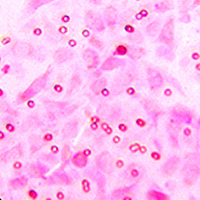Long noncoding RNA H19 accelerates tenogenic differentiation by modulating miR-140-5p/VEGFA signaling

Accepted: 24 July 2021
Supplementary: 87
HTML: 17
All claims expressed in this article are solely those of the authors and do not necessarily represent those of their affiliated organizations, or those of the publisher, the editors and the reviewers. Any product that may be evaluated in this article or claim that may be made by its manufacturer is not guaranteed or endorsed by the publisher.
Authors
Rotator cuff tear (RCT) is a common tendon injury, but the mechanisms of tendon healing remain incompletely understood. Elucidating the molecular mechanisms of tenogenic differentiation is essential to develop novel therapeutic strategies in clinical treatment of RCT. The long noncoding RNA H19 plays a regulatory role in tenogenic differentiation and tendon healing, but its detailed mechanism of action remains unknown. To elucidate the role of H19 in tenogenic differentiation and tendon healing, tendon-derived stem cells were harvested from the Achilles tendons of Sprague Dawley rats and a rat model of cuff tear was established for the exploration of the function of H19 in promoting tenogenic differentiation. The results showed that H19 overexpression promoted, while H19 silencing suppressed, tenogenic differentiation of tendon-derived stem cells (TDSCs). Furthermore, bioinformatic analyses and a luciferase reporter gene assay showed that H19 directly targeted and inhibited miR-140-5p to promote tenogenic differentiation. Further, inhibiting miR-140-5p directly increased VEGFA expression, revealing a novel regulatory axis between H19, miR-140-5p, and VEGFA in modulating tenogenic differentiation. In rats with RTC, implantation of H19-overexpressing TDSCs at the lesion promoted tendon healing and functional recovery. In general, the data suggest that H19 promotes tenogenic differentiation and tendon-bone healing by targeting miR-140-5p and increasing VEGFA levels. Modulation of the H19/miR-140-5p/VEGFA axis in TDSCs is a new potential strategy for clinical treatment of tendon injury.
Supporting Agencies
Traditional Chinese Medicine of Guangdong Province of China, Fundamental Research Funds for the Central Universities, National Natural Science Foundation of ChinaHow to Cite

This work is licensed under a Creative Commons Attribution-NonCommercial 4.0 International License.
PAGEPress has chosen to apply the Creative Commons Attribution NonCommercial 4.0 International License (CC BY-NC 4.0) to all manuscripts to be published.

 https://doi.org/10.4081/ejh.2021.3297
https://doi.org/10.4081/ejh.2021.3297






